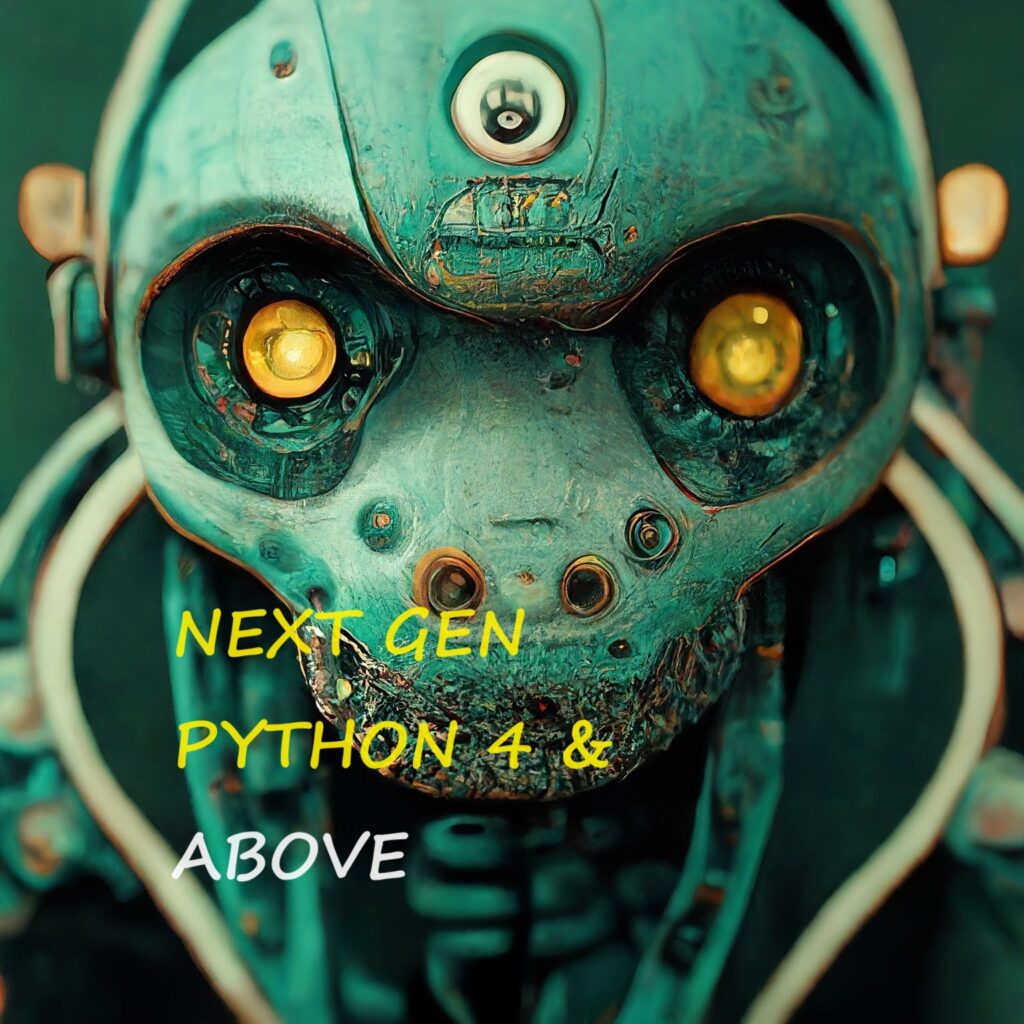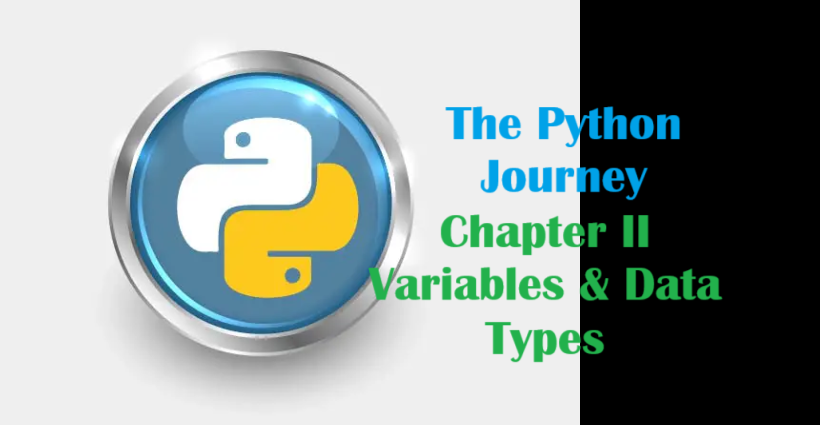Python has been a dominant force in the programming world for decades, known for its simplicity, readability, and versatility. As we anticipate the next major version of Python, it’s exciting to consider what new features and improvements might be on the horizon. This article explores the potential updates and enhancements that could define the future of Python, ensuring it remains a favorite among developers worldwide. In this article we explore what we want in the upcoming version and explore the PEPs that are there for python 3.13 tenatatively.

Evolution of Python: A Brief Overview
Before delving into the expected features of the next major Python release, it’s essential to understand the journey so far. Python has undergone several significant updates since its inception by Guido van Rossum in the late 1980s. Each new version has brought critical improvements, from performance enhancements to new libraries and language features.
Python 2 to Python 3
One of the most notable transitions was from Python 2 to Python 3. This shift introduced several backward-incompatible changes, aiming to clean up the language and make it more consistent. Python 3, first released in 2008, emphasized the need for modernization, despite the challenges posed by transitioning from Python 2.
Python 3.x Series
The Python 3.x series has seen numerous incremental updates, each refining the language and extending its capabilities. Key features introduced in recent versions include f-strings for better string formatting, the async and await keywords for asynchronous programming, type hints to improve code readability and maintainability, and the dataclasses module to simplify the creation of classes.
Anticipated Features in the Next Major Python Version
As we look forward to the next major version of Python, several areas stand out where improvements and new features could significantly impact the language’s usability, performance, and developer experience. Here are some of the most anticipated changes and additions.

1. Improved Performance
Performance has always been a critical area for Python. While Python is known for its ease of use, it has often faced criticism for its slower execution speed compared to languages like C++ or Java. The next major version of Python is expected to focus heavily on performance enhancements. This could involve:
- Just-In-Time (JIT) Compilation: Implementing a JIT compiler, like PyPy, within the main Python interpreter (CPython) could significantly boost execution speed by compiling code at runtime.
- Optimized Standard Library: Further optimizations in the standard library functions and data structures could lead to faster execution of common operations.
- Better Multi-threading Support: Enhancing the Global Interpreter Lock (GIL) or even removing it could allow for more efficient multi-threading, making Python more suitable for concurrent execution.
2. Enhanced Type Hinting and Static Typing
Type hints, introduced in Python 3.5, have been a valuable addition for improving code quality and maintainability. The next major version could see even more robust support for type hinting and static typing, including:
- Stricter Type Checking: Tools like MyPy could be integrated more closely with the Python interpreter, allowing for more stringent type checks during development.
- Type Inference: Enhanced type inference capabilities could reduce the need for explicit type annotations, making code cleaner without sacrificing type safety.
- Better IDE Support: Improvements in type hinting could lead to smarter and more intuitive code completion and error detection in Integrated Development Environments (IDEs).
3. Advanced Asynchronous Programming
Asynchronous programming has become increasingly important, especially for web development and I/O-bound applications. The next major Python version could bring advancements in this area, such as:
- Enhanced Asyncio Library: Continued improvements to the
asynciolibrary, making it more user-friendly and powerful. - Native Async Support in Standard Libraries: More standard library modules could offer native support for asynchronous operations, reducing the need for third-party libraries.
- Better Debugging Tools: Improved tools for debugging asynchronous code, making it easier to track and resolve issues in concurrent programs.
4. More Powerful Standard Library
The Python standard library is one of its greatest strengths, offering a wide range of modules and tools out of the box. The next major version could expand this even further:
- Modern Web Development Tools: Inclusion of more tools and libraries for modern web development, such as native support for WebAssembly.
- Data Science and Machine Learning: Enhanced support for data science and machine learning, potentially integrating popular libraries like NumPy, pandas, and TensorFlow more closely.
- Improved Security Modules: More robust security features, including advanced cryptographic tools and better support for secure coding practices.
5. Better Packaging and Distribution
Python’s packaging and distribution system has improved over the years, but there is always room for enhancement. The next major version could introduce:
- Simplified Package Management: Further simplification of package management tools like
pipandvirtualenv, making it easier to manage dependencies and environments. - Integrated Build Systems: Closer integration with build systems like
setuptoolsandpoetry, streamlining the process of creating and distributing packages. - Enhanced Dependency Resolution: Improvements in dependency resolution algorithms to reduce conflicts and ensure smoother installations.
6. Improved Internationalization and Localization
As Python continues to grow in popularity globally, better support for internationalization and localization is crucial. The next major version could focus on:
- Expanded Unicode Support: Enhanced support for Unicode, ensuring that Python handles text from all languages more seamlessly.
- Localized Standard Library: Providing localized versions of standard library modules, making Python more accessible to non-English speakers.
- Better Date and Time Handling: Improved handling of international date and time formats, time zones, and related calculations.
7. Enhanced Tooling and Developer Experience
The developer experience is a key aspect of Python’s success. The next major version could bring improvements to the tooling ecosystem, including:
- Integrated Development Tools: Closer integration of development tools like linters, formatters, and code analyzers with the Python interpreter.
- Better Testing Frameworks: Enhancements to testing frameworks, making it easier to write, run, and manage tests.
- Improved Documentation: Continued efforts to improve the quality and accessibility of Python’s documentation, including more tutorials and examples.
8. Backward Compatibility and Migration Tools
Transitioning to a new major version can be challenging for developers, especially concerning backward compatibility. The next major Python version should:
- Provide Clear Migration Paths: Detailed guides and tools to assist developers in transitioning from older versions of Python.
- Gradual Deprecation: Implementing a gradual deprecation strategy for outdated features, giving developers ample time to adapt.
- Compatibility Layers: Offering compatibility layers or shims to support legacy code while encouraging modernization.
Potential Killer Features for the Next Major Python Version
Beyond the incremental improvements and enhancements, some “killer features” could redefine what Python is capable of, setting it apart from other programming languages. Here are some potential game-changing additions:
1. Native Support for Parallelism and Concurrency
While Python’s GIL has been a long-standing limitation for concurrent execution, removing or reworking it to enable true parallelism could revolutionize Python’s performance. Native support for parallel processing, without the need for workarounds or external libraries, would make Python an even more powerful tool for high-performance computing.
2. Advanced Machine Learning and AI Integration
Python is already the go-to language for machine learning and AI development. The next major version could further cement this position by:
- Integrating Popular Libraries: Building more seamless integrations with popular libraries like TensorFlow, PyTorch, and scikit-learn.
- Providing High-Level APIs: Offering high-level APIs for common machine learning tasks, making it easier for developers to implement complex models and algorithms.
- Optimizing Performance: Enhancing performance for machine learning workloads, potentially through better GPU support and optimized numerical operations.
3. WebAssembly Support
WebAssembly (Wasm) is a technology that allows code to run at near-native speed in web browsers. Native support for compiling Python code to WebAssembly could open up new possibilities for web development, allowing developers to run Python applications directly in the browser with high performance.
4. Enhanced Security Features
As cybersecurity becomes increasingly important, the next major Python version could introduce advanced security features, such as:
- Built-in Vulnerability Scanning: Tools for scanning code and dependencies for known vulnerabilities.
- Secure Coding Practices: Integrated support for secure coding practices, helping developers write safer code.
- Advanced Encryption Libraries: More robust encryption libraries and tools for secure data handling.
5. Quantum Computing Support
Quantum computing is an emerging field with the potential to revolutionize various industries. Native support for quantum computing libraries and frameworks in Python could position the language as a leader in this cutting-edge domain. This might include:
- Quantum Algorithms: High-level APIs for developing and testing quantum algorithms.
- Integration with Quantum Simulators: Support for integrating with popular quantum simulators and hardware.
- Educational Tools: Resources and tools to help developers and researchers learn about and experiment with quantum computing.
6. Improved Developer Collaboration Tools
The next major version of Python could introduce features that enhance collaboration among developers, such as:
- Integrated Version Control: Closer integration with version control systems like Git, enabling seamless collaboration and code management.
- Real-time Collaboration: Tools for real-time collaboration on code, similar to what platforms like Google Docs offer for text documents.
- Better Code Review Tools: Enhanced tools for code review, making it easier to provide and receive feedback on code changes.
Upcoming import PEPs
Python continues to evolve with each release, and the period following Python 3.12 is no exception. Several PEPs (Python Enhancement Proposals) are set to shape the future of Python, adding new features and enhancing existing ones to keep Python competitive and user-friendly. Here are some of the notable PEPs planned for post-Python 3.12:
PEP 669: Low-Impact Monitoring for CPython
PEP 669 introduces a standardized, low-overhead API for monitoring Python code execution. This is designed to benefit tools like profilers, debuggers, and coverage tools by providing hooks into the interpreter without significantly impacting performance. The proposal outlines mechanisms to monitor events like function calls, exceptions, and line executions. This will allow tools to register callbacks for these events, offering greater insight into code behavior while maintaining performance (Python Enhancement Proposals (PEPs)) (Discussions on Python.org).
PEP 703: Making the Global Interpreter Lock (GIL) Optional in CPython
One of the most anticipated PEPs is PEP 703, which aims to make the Global Interpreter Lock (GIL) optional in CPython. This is a significant step towards improving Python’s concurrency model. The GIL has been a longstanding bottleneck in multi-threaded Python applications, and its removal or optional use could lead to substantial performance improvements in multi-core systems. The proposal suggests introducing a build configuration where CPython can be compiled without the GIL, allowing better utilization of system resources in multi-threaded scenarios .
PEP 684: A Per-Interpreter GIL
Related to PEP 703, PEP 684 introduces the concept of a per-interpreter GIL. This means each Python interpreter instance within a process would have its own GIL, allowing true parallelism within multi-interpreter applications. This approach aims to strike a balance between the complete removal of the GIL and the current single-GIL model, providing better scalability and performance for applications that can benefit from running multiple interpreters simultaneously .
PEP 722: Simple Statement Logging
PEP 722 proposes a mechanism for simple logging statements, aimed at simplifying the logging process. This would enable developers to insert logging statements directly into the code without needing to configure a logger explicitly. The goal is to make logging more accessible, especially for beginners and in quick scripts where setting up a full logging configuration might be overkill .
PEP 734: Multiple Interpreters in the Standard Library
PEP 734 aims to expose multiple interpreter support through the standard library, making it easier to use subinterpreters in Python code. The proposal includes a minimal API to manage multiple interpreters, emphasizing isolation and communication between them. This feature can help in scenarios requiring parallel execution without the overhead of process-based concurrency (Discussions on Python.org) (Discussions on Python.org).
Other Enhancements and Proposals
In addition to these major PEPs, there are several other enhancements and proposals being discussed:
- Improved Type Hints and Static Typing: Enhancements to type hinting and static typing continue to be a focus, with proposals aimed at making type annotations more expressive and easier to use.
- Pattern Matching Enhancements: Following the introduction of structural pattern matching in Python 3.10, further enhancements are expected to make pattern matching more powerful and flexible.
- Improved Asynchronous Programming Support: Enhancements to
asyncioand related libraries aim to make asynchronous programming more efficient and user-friendly. - Standard Library Modernization: Efforts are ongoing to modernize the standard library, deprecating outdated modules and introducing new, more powerful ones.
- Performance Improvements: Continuous improvements to the Python interpreter’s performance, including optimizations in the CPython runtime, are always a priority.
Potential “Killer Features”
Based on these PEPs and ongoing discussions, several potential “killer features” could significantly enhance Python’s appeal:
- Concurrency without GIL: Making the GIL optional or introducing a per-interpreter GIL could revolutionize multi-threaded Python applications, enabling better performance on multi-core systems.
- Enhanced Monitoring Tools: The introduction of low-impact monitoring APIs would provide developers with powerful tools to debug and profile their applications with minimal performance overhead.
- Simplified Logging: Making logging simpler and more intuitive could increase its adoption, helping developers maintain better visibility into their applications’ behavior.
- Multiple Interpreters: Easier access to multiple interpreters can facilitate parallel execution patterns within a single process, improving scalability and performance for certain types of applications.
- Modernized Standard Library: A continuously evolving standard library that keeps pace with modern development practices and tools will ensure Python remains relevant and competitive.
As Python evolves, these enhancements and new features are expected to bolster its usability, performance, and scalability, ensuring it remains a top choice for developers across various domains. The Python community’s active participation in proposing and discussing these PEPs highlights the collaborative effort to keep the language robust and future-ready.
Conclusion
The next major version of Python promises to bring exciting new features and improvements that will enhance the language’s performance, usability, and developer experience. From improved performance and enhanced type hinting to advanced asynchronous programming and more powerful standard libraries, there is much to look forward to.
Incorporating killer features like native support for parallelism and concurrency, advanced machine learning integration, WebAssembly support, enhanced security features, quantum computing capabilities, and improved developer collaboration tools could redefine what Python is capable of, ensuring its continued relevance and dominance in the programming world.
As we anticipate these changes, one thing remains certain: Python’s evolution will continue to empower developers, enabling them to build innovative solutions and tackle new challenges with confidence and ease. Whether you’re a seasoned Pythonista or a newcomer to the language, the future of Python holds immense potential and exciting possibilities.






Your point of view caught my eye and was very interesting. Thanks. I have a question for you.